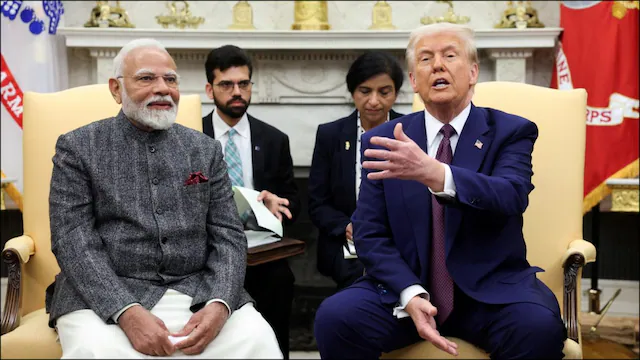Climate change is one of the most significant challenges facing our planet today. It affects the environment, society, and economy in ways that are not only immediate but also long-term. This blog explores the effects of climate change, how governments, businesses, and individuals are responding, and the role renewable energy and public education play in the global effort to combat it.
The Effects of Climate Change Around the World
Climate change refers to the long-term changes in temperature, weather patterns, and sea levels. These changes are caused by the increasing amounts of greenhouse gases like carbon dioxide (CO2) in the atmosphere. The burning of fossil fuels, deforestation, and industrial activities have significantly increased these gases, trapping heat and warming the planet.
Rising Temperatures
One of the most noticeable effects of climate change is the rise in global temperatures. Over the past century, Earth’s average temperature has increased by about 1.2°C. Although this may seem small, even small changes in temperature can have a significant impact on ecosystems and weather patterns.
Extreme Weather Events
Higher temperatures have caused more frequent and intense weather events, such as heatwaves, floods, droughts, and hurricanes. These extreme weather conditions have devastating effects on communities, causing loss of life, damaging infrastructure, and affecting agriculture.
Damage to Ecosystems
Ecosystems around the world are being altered due to climate change. Rising temperatures and shifting weather patterns are causing some species to migrate, while others are at risk of extinction. Coral reefs, which support marine life, are also dying due to warmer oceans. This loss of biodiversity affects food security, tourism, and local economies.
Melting Ice and Rising Sea Levels
The warming of the planet is causing polar ice caps and glaciers to melt, leading to rising sea levels. Coastal areas are particularly vulnerable to flooding, and many island nations are at risk of disappearing altogether. This also threatens freshwater supplies as many of the world’s rivers are fed by glacial meltwater.
How Governments Are Taking Action
Governments around the world have recognized the urgency of addressing climate change. They are taking steps to reduce emissions, protect vulnerable communities, and adapt to the changing climate.
Climate Change Laws and Policies
Many countries have enacted laws to reduce greenhouse gas emissions. These laws aim to limit pollution and transition to cleaner energy sources. Some nations have set specific targets to achieve net-zero emissions by a certain year. For example, the European Union and the United Kingdom have committed to reaching net-zero by 2050.
International Agreements
One of the most important steps in the global fight against climate change is international cooperation. The Paris Agreement, signed in 2015, is a landmark climate deal where countries pledged to limit global warming to well below 2°C, with efforts to limit it to 1.5°C. This agreement encourages countries to submit their climate action plans and review their progress every few years.
National and Local Initiatives
In addition to international efforts, many countries and cities have created their own initiatives to combat climate change. These include investing in green infrastructure, improving public transportation, and implementing carbon pricing systems. By setting ambitious goals and holding industries accountable, governments aim to reduce carbon emissions and prepare for the impacts of climate change.
The Role of Renewable Energy in Reducing Emissions
One of the most effective ways to tackle climate change is by reducing the use of fossil fuels and switching to renewable energy sources. Renewable energy sources like solar, wind, hydroelectric, and geothermal power are clean alternatives to coal, oil, and natural gas, which release large amounts of CO2 when burned.
Solar Energy
Solar energy harnesses the power of the sun to generate electricity. Solar panels, which convert sunlight into electricity, can be installed on rooftops, in solar farms, and even in space. As technology advances, solar energy is becoming more affordable and accessible, making it a viable option for individuals and businesses.
Wind Energy
Wind power is another renewable energy source that is growing rapidly. Wind turbines use the wind to generate electricity, and many countries, including the United States and China, are investing heavily in wind energy. Offshore wind farms, in particular, have become a key part of the global energy transition.
Hydroelectric Power
Hydroelectric power uses water flow to generate electricity. Dams built on rivers help capture and control the flow of water, converting it into usable energy. This source of energy has been used for decades and remains an important part of the energy mix in many countries.
Reducing Emissions
By switching to renewable energy, the world can significantly reduce its reliance on fossil fuels. This shift helps lower emissions, reduce air pollution, and mitigate the effects of climate change. Governments, businesses, and individuals can all play a role in supporting the adoption of renewable energy.
How Businesses Are Adapting to Climate Change
Businesses are becoming more aware of the need to address climate change, not only due to environmental concerns but also because it makes good business sense. Sustainable practices are helping companies reduce costs, attract customers, and stay ahead of regulations.
Reducing Carbon Footprints
Many companies are taking steps to reduce their carbon footprints by using energy-efficient technologies, switching to renewable energy, and minimizing waste. For instance, tech companies like Google and Microsoft are running their data centers entirely on renewable energy, significantly reducing their environmental impact.
Sustainable Supply Chains
Businesses are also looking at their entire supply chain to reduce emissions. This involves sourcing materials sustainably, optimizing transportation to reduce fuel use, and ensuring that products are recyclable or biodegradable. Companies that adopt these practices are seen as more responsible and can attract consumers who care about sustainability.
Investing in Green Technologies
Many businesses are investing in new technologies that reduce environmental harm. Electric vehicles, energy-efficient appliances, and green building materials are just a few examples of innovations that help companies reduce their carbon footprint. Some businesses are even exploring carbon capture and storage technologies to remove CO2 from the atmosphere.
The Importance of Public Awareness and Education
While governments and businesses play a crucial role in tackling climate change, public awareness and education are just as important. When people understand the impacts of climate change, they are more likely to make decisions that help reduce their carbon footprint.
Raising Awareness
Campaigns, documentaries, and educational programs are helping people understand the science of climate change and the actions they can take. Schools, universities, and media outlets are spreading knowledge about climate issues, urging individuals to adopt sustainable practices.
Encouraging Action
By educating the public, communities are becoming more active in combating climate change. People are taking steps like reducing energy consumption, using public transport, and supporting businesses that prioritize sustainability. Individual actions may seem small, but when multiplied across the globe, they can have a significant impact.
Supporting Global Efforts
Public awareness also helps build support for government policies and international agreements aimed at fighting climate change. When citizens are informed, they are more likely to vote for leaders who prioritize environmental protection and to participate in initiatives like tree planting or clean-up drives.
Conclusion
Climate change is a global issue that requires a coordinated effort from governments, businesses, and individuals. From the effects on the environment to the policies and technologies being adopted to reduce emissions, it is clear that addressing climate change is essential for the future of our planet. As awareness grows and action increases, there is hope that we can slow down the effects of climate change and build a more sustainable world for future generations.












